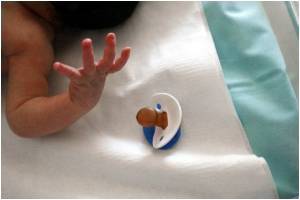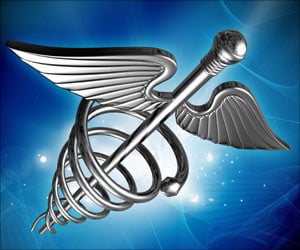
The doctors finally told her that the baby's organs were developing on the outside of his body.
The condition, known as an omphalocele, is a birth defect in which the fetus' intestines and other abdominal organs stick out from the belly button.
"Once we heard the word, 'omphalocele,' it was our world," ABC news quoted Davis as saying.
A thin membrane that keeps the organs intact usually covers the omphalocele. While the condition can range in size and severity, the intestines, and sometimes the liver and spleen, protrude outside the baby's body.
About one in 10,000 births result in some form of an omphalocele, and about 25 to 40 percent of infants with an omphalocele have other birth defects, as well. Heart defects are common in children with omphaloceles. It is unclear why omphaloceles form in some babies.
Advertisement
After a pregnancy with seemingly endless appointments and ultrasounds, Davis gave birth to Hayes on 25th March, 2011, via Cesarean section at Children's Memorial Hermann Hospital in Houston, Tx.
Advertisement
"I didn't know if he would breathe on his own or eat on his own or whether the omphalocele would stay intact," Davis said.
The nurses secured the omphalocele after delivery and immediately took Hayes to the Neonatal Intensive Care Unit. During the weeks that followed, Davis and her husband learned how to take care and treat the omphalocele.
Hayes was luckier than many babies born with the condition. He did not have a heart defect or other birth defects in relation to the omphalocele.
Kuojen Tsao, professor of pediatric surgery at The University of Texas Health Science Center at Houston, said that it was bigger than most omphaloceles and there is usually not enough tissue to surgically put the organs back in the body and sew the skin up.We can do an operation known as component separation," Tsao said.
"It's not necessarily a new technique, but it is new to these problems in babies," Tsao said.
Traditionally, the condition requires several operations to tighten up the abdomen and bring the edges of the skin fully together, but Tsao believed the component separation was possible for Hayes because the doctors had waited several months for him to grow and develop more skin and tissue to work with in covering the organs.
"Surgery always has risk involved.
"We wanted to try and get back to doing just one surgery to fix the condition. Every time you go in again, there's risk of injuring the bowel and liver, there's blood loss, and then that baby is going under with anesthesia. We figured if we could do it once to fix the problem, we decrease the amount of risk," Tsao added.
Source-ANI











